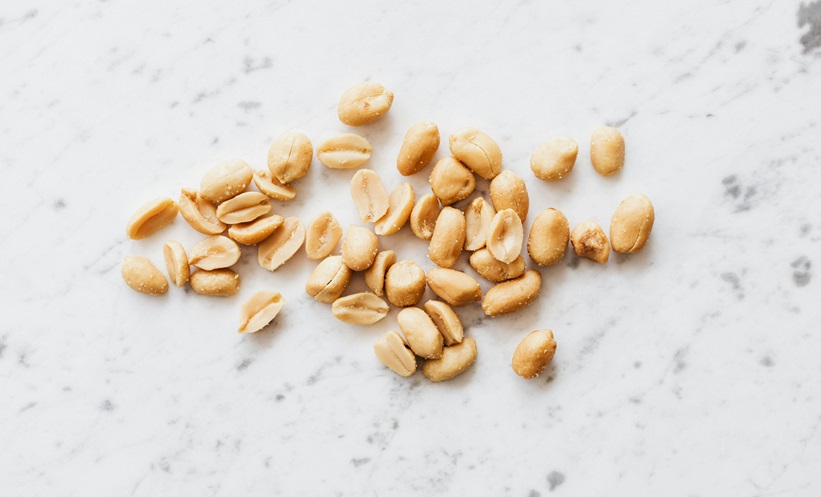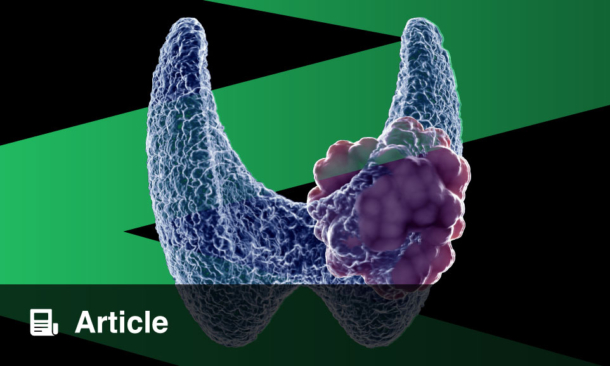Abstract
The burden of food allergy is significant, multi-faceted, and well documented. In an effort to improve food-allergic patients’ quality of life, there is a continuous effort to provide novel treatment options for food allergy. Food immunotherapy is an exciting area of research that has seen tremendous progress over the last decade. This review examines the current literature and provides insights into key oral immunotherapy studies published so far. Areas requiring further study, the role of food oral immunotherapy, and its potential future applications for patient care are also discussed.
INTRODUCTION
Food allergy affects 6–8% of children and its prevalence is increasing. Milk allergy affects ˜2% of infants, whereas egg allergy is the most common food allergy in childhood, with rates of up to 8.9% reported in a recent Australian study.1 Peanut allergies were once rare, but now are the leading cause of fatal food-allergic reactions.2 Their prevalence has doubled over the past two decades, mostly in the Western world, with the disease currently affecting 0.4–3% of children.1,3-5
Strict food avoidance, emergency medication, and education on how to promptly recognise and treat reactions currently represent the mainstream approach of managing food allergy. Unfortunately, accidental reactions are common, with cross-contamination and the ingestion of unlabelled foods being responsible for the vast proportion of all inadvertent reactions. In addition, food labelling is often inadequate, but this can vary between countries.6-8 Food-allergic individuals can experience a low quality of life due to high levels of anxiety and increased awareness that their condition can be fatal.9 Parents of food-allergic children also present with high levels of stress, due to the perceived risk of death of their child and constant dietary and social restrictions.10 The burden of food allergy is such that there is a clear need for a form of treatment that has the potential to be disease-modifying.
FOOD ORAL IMMUNOTHERAPY
Over the last decade, food oral immunotherapy (OIT) has become an area of intense research and has shown significant promise as a form of active treatment for common food allergies encountered in childhood. Immunotherapy consists of the administration of small, gradually increasing doses of the specific food that patients are allergic to, with the aim to desensitise them and ultimately enable them to eat varying amounts of the allergenic food without reactions. Desensitisation refers to a rise in the allergenic threshold of reactivity and implies ongoing, usually daily, dose ingestion. Sustained unresponsiveness refers to the ability of subjects who have completed an immunotherapy protocol to take breaks from treatment, usually a few weeks or months, and then return to daily allergen consumption at their previous dose, without suffering any allergic reactions. Long-term tolerance is defined as the ability to eat the previously allergenic food ad lib, in any amount and with any period of food abstinence, however prolonged, without any problems or the need for ongoing daily treatment. In addition to OIT, alternative routes of immunotherapy such as sublingual and epicutaneous are being pursued.
Food OIT studies have examined various food allergens, but mostly milk, egg, and peanut. Studies on food immunotherapy for milk and egg have shown promise in desensitising allergic children.11,12 A systematic review on milk immunotherapy reported that OIT, when compared to a milk elimination diet alone, increased the likelihood of achieving full tolerance to cow’s milk. Five randomised control trials (RCTs) fulfilled the criteria of this systematic review and it is recommended by the authors that larger RCTs measuring all patient-important outcomes are still needed.13 Skripak et al.14 reported on a double-blind placebo-controlled study of OIT for cow’s milk allergy in children. After OIT, the median cumulative dose inducing a reaction in the active treatment group was 5,140 mg compared with 40 mg pre-OIT. There was no change in the median threshold in the placebo group. Although reactions were common during the study, nearly 90% were transient and did not require treatment. Reactions involving some combination of gastrointestinal, lower respiratory tract, and skin symptoms were rare, occurring with a median frequency of 1% of active doses.14
Baked milk immunotherapy for baked milk-reactive patients showed less encouraging results compared to fresh cow’s milk studies. In fact, a small study reported that only 21% of participants were successfully desensitised to baked milk. Only a limited increase in the challenge threshold to unheated milk was observed for those who succeeded in baked milk desensitisation, and the risk of anaphylaxis and adverse reactions was significant during the intervention.15 This study raises the important question of whether baked milk-reactive patients are amenable to OIT in the first place, as they appear to have a severe allergic phenotype, although the data provided on extensively heated versus unheated milk is currently limited. In addition, children who are unable to tolerate baked milk are still selected to participate in OIT studies. Generally, children who could tolerate baked milk and subsequently progress to less modified forms of dairy have a good prognosis.16,17
For egg allergies, a double-blind placebo-controlled, randomised OIT study of 55 children with egg allergy resulted in a 55% rate of desensitisation in the active group after 10 months of therapy. In the placebo group the desensitisation rate was 0%. After another year of OIT, the desensitisation rate rose to 75%, suggesting that longer treatment duration results in more successful desensitisation.12 A 4-year follow up of these subjects reiterated this conclusion, reporting that sustained unresponsiveness after egg OIT is enhanced with longer duration of therapy and increases the likelihood of tolerating unbaked egg in the diet.18 It is important to mention that the longer OIT continues, the greater the chance of natural acquisition of tolerance for foods such as egg and milk, and, as such, the data require careful interpretation. Important consideration should be given to the participating subjects, as certain studies may include subjects more or less likely to outgrow their milk/egg allergy in the upcoming 1–2 years.
For peanut OIT, USA investigators reported that, in a RCT, 84% of active subjects passed a final challenge of 20 peanuts (˜5,000 mg peanut protein) compared with only 1 peanut (280 mg peanut protein) tolerated by the placebo subjects in the final challenge, after completing a year of OIT. The study regimen was well tolerated with clinically relevant symptoms seen after only 1.2% of build-up doses and no peanut OIT subject requiring adrenaline administration.19 The largest Phase II, randomised controlled, crossover trial of peanut OIT, which originated in the UK, investigated the role of peanut OIT in desensitising 99 children, aged 7–16 years, inclusive of all severities of peanut allergy. Following completion of the intervention, in the active group, 84% were desensitised to 5 peanuts, whereas 62% of OIT participants successfully passed a 10-peanut challenge. Participants who successfully completed the study protocol had a significant 25-fold increase in their peanut threshold; therefore, the treatment allowed them to eat large quantities of peanuts, well above the levels present in contaminated snacks and meals. Adverse effects, seen in most participants, were mild and easily treatable, with oral itching being the most common side effect, occurring after 6.3% of all doses. Approximately 20% of patients reported respiratory symptoms during up-dosing; these symptoms responded to the administration of inhaled bronchodilators.20 Quality of life of subjects participating in food OIT studies is significantly improved following successful desensitisation. It has also been reported that immunotherapy improves caregivers’ health-related quality of life.20,21
SAFETY AND ADVERSE REACTIONS DURING FOOD ORAL IMMUNOTHERAPY
It appears from the above studies, and other published data, that food OIT presents an interesting and promising novel form of intervention for food-allergic children, showing good efficacy for desensitisation. The safety profile is acceptable, with most subjects experiencing mild or moderate reactions during treatment. As severe reactions can occur, it is of utmost importance that children have both an action plan and adrenaline autoinjectors readily available to treat any allergic reactions. Families should also be educated on the fact that viral illnesses and other factors (exercise, tiredness, and menstruation) may lower the threshold of reactivity in patients undergoing OIT.
For milk OIT, a Cochrane systematic review by Yeung et al.,22 which included 16 records representing five different trials, reported adverse reactions in 97/106 milk-OIT patients, experienced at least one symptom, although most were local and mild. For every 11 patients receiving milk OIT, 1 required intramuscular epinephrine. One patient required it on two occasions.22
A different systematic review, investigating efficacy and safety of egg OIT, included four RCTs and a total of 167 individuals (100 OIT participants and 67 controls), all of whom were children aged 4–15 years. Sixty-nine per cent of the participants presented with mild-to-severe adverse effects during OIT treatment and 5 of the 100 participants receiving OIT required epinephrine.23
Concerns have been raised about the onset of eosinophilic oesophagitis (EoE) after OIT and there is debate on whether OIT incites EoE or unmasks a pre-existing condition. Such cases have been described and a meta-analysis showed that up to 2.7% of patients with immunoglobulin (Ig)E-mediated food allergies undergoing food OIT could develop this complication, with EoE often resolving following discontinuation of OIT treatment. However, the available data are limited, often of low quality, and a causal relationship between food OIT and EoE remains controversial.24,25 Future studies will need to concentrate on further improving the safety of this form of treatment. The group of patients who are likely to benefit most from OIT will need to be identified and targeted for this intervention, keeping in mind that certain patient groups may not be suitable for immunotherapy at all.
MULTIPLE FOOD ALLERGENS
For children with multiple food allergies, the simultaneous administration of a combination of food allergens compared with the administration of a single allergen has been studied. Fifteen participants who were only allergic to peanut were compared with 25 who had additional food allergies. The primary aim of the trial was to assess safety and achieve a 10-fold increase from the initial challenge threshold. The dosing protocol was designed to continue dose increases up to a daily maintenance dose of 4,000 mg protein of each allergen, up to a 20,000 mg cumulative dose for those on five allergens, which was achieved by the majority of study participants. Most reactions during multi-food OIT were mild, and there was no statistical difference in adverse event rate or severity when comparing single with multi-OIT regimens. This approach has the potential to minimise the number of hospital patient visits and the overall cost of treatment, as OIT to more than one food allergen can be time-consuming and expensive if the allergens are to be administered sequentially, one at a time.26,27 Future developments of this approach could include the concept of personalised patient treatment. A combination of different food allergens, depending on the patient’s unique food-allergic profile, may be used to match the intervention to individual requirements and preferences.
ROLE OF IMMUNE-MODULATORS
The use of immune-modulators in combination with OIT has been suggested as a potential treatment for food allergy, with the aim to facilitate the OIT process. For peanut-allergic children, a double-blind, placebo-controlled, randomised trial of the probiotic Lactobacillus rhamnosus together with concurrent administration of peanut OIT was examined. This combined intervention was effective in inducing desensitisation in the majority (89.7%) of the active subjects; however, there was no direct comparison group that received peanut OIT without probiotics and not all patients had entry food challenges prior to participating.28 As a result, data should be interpreted with caution and further studies are required comparing peanut OIT with probiotics directly. Currently, there is a lot of interest in the role of probiotics in inducing tolerance in food-allergic patients.
The use of anti-IgE (omalizumab) as an adjuvant in milk immunotherapy was examined in a randomised, double-blind, placebo-controlled trial that included 57 subjects with severe, persistent milk allergy. Significant improvements were shown in terms of safety, but not in outcomes of efficacy for the omalizumab and OIT-treated group compared with the group that received placebo and OIT.29 Omalizumab, in combination with peanut OIT, was also investigated in 13 peanut allergic children with high peanut specific IgE levels. Omalizumab was shown to be effective in facilitating rapid oral desensitisation, but allergic reactions recurred once it was discontinued.30
When omalizumab was evaluated in 25 OIT paediatric patients with multiple food allergens, results were encouraging. Omalizumab was administered for 8 weeks prior to, and 8 weeks following, the initiation of a rush multi-OIT schedule. Doses were determined based on weight and total IgE levels as per omalizumab global dosing schedule. After pre-treatment with omalizumab, 19/25 participants tolerated the initial rapid escalation day with minimal or no rescue therapy and the majority of reactions experienced by participants were mild. Only one severe reaction was reported, which was treated successfully with adrenaline. Interestingly, participants could reach the top maintenance dose (4 g) for each allergen by at a median time of just 18 weeks. In a previous, similar study, without administration of omalizumab, participants required a median of 85 weeks to reach the same top dose, for up to five foods administered simultaneously with oral OIT.26,27
TRANSIENT AND LONG-TERM EFFECTS
The acquisition of long-term tolerance appears to be the goal for most individuals. Interestingly though, for many families, desensitisation to a level protective of accidental ingestion reactions is also actively pursued and accepted as a satisfactory outcome of OIT. Various studies have looked at transient discontinuation of daily OIT doses, usually for a few weeks, to assess whether food immunotherapy can be considered a cure. Approximately 25–50% of patients maintain their desensitisation after these breaks of OIT treatment.12,31-33 Results appear to be much more encouraging for younger children.34 Generally, the effect on successful, long-term, tolerance to foods after completion of OIT is much smaller compared with successful desensitisation, which, in most studies, is achieved by the majority. More data are needed and we are still missing a systematic, universally applied, approach to this important issue with well-designed and much larger studies.
THE ROLE OF FOOD ORAL IMMUNOTHERAPY IN EVERYDAY CLINICAL PRACTICE
There is currently some controversy on whether food OIT is ready to be implemented in daily clinical practice.35-37 Food-allergic children are subject to significant dietary and social restrictions and a successful treatment is very much desired by patients and caregivers.
Despite various concerns that have been raised, food OIT is already offered as a clinical treatment in many parts of the world, especially in private practice. Wasserman et al.37 described their experience of treating >300 patients with peanut OIT, in both the private and hospital sector, and reported that 85% of their patients managed to reach the target maintenance dose. Adverse reactions occurred in 11.9% of patients, but only 1/5 of these required adrenaline administration. The investigators reported 0.7 of 1,000 doses during dose escalation, and 0.2 of 1,000 doses during maintenance, needed treatment with adrenaline.38 To understand the existing practices of allergists who perform OIT in the USA, Greenhawt et al.38 published the results of an online survey of members of the American Academy of Allergy Asthma and Immunology (AAAAI). A total of 442 clinicians responded to the survey, with a minority (13.8%) providing OIT as a service or studying OIT under a research protocol. Some important differences in the practice of OIT between academic and non-academic providers were highlighted, with academics obtaining institutional review board and investigational new drug approval more often than non-academic clinicians.39
CONCLUSION
Published studies on food OIT have shown encouraging results regarding its efficacy in desensitising food-allergic patients, with an acceptable safety profile and a documented improvement in quality of life. Adverse reactions occurring during treatment are mostly mild to moderate, although episodes of anaphylaxis have also been recorded and the risk should be considered prior to a decision being made to participate in food OIT.
Current protocols vary widely in their dosing schedules and duration of treatment, as the optimal escalation, maintenance dose, and duration of immunotherapy is still unknown. It is reasonable to speculate that severity of the disease at study entry may affect individual patient results, although the exact interplay between the two requires further investigation. Currently, patient selection also varies between studies, with some trials including food-allergic patients of all severities and others choosing to enrol only subjects that the investigators consider to be at the high-risk end of the spectrum for food allergy. Our ability to identify this group is limited.
It is still unclear what the long-term effects of food OIT are and for how long the treatment should be continued. Cessation of maintenance dosing and its effect on previously treated patients, as well as long-term tolerance, constitute important issues that have not yet been fully addressed. The question of whether food immunotherapy is better than strict allergen avoidance is still a controversial issue and the health economics of this novel treatment are also largely unknown.
In summary, food OIT presents an exciting, potentially disease-modifying, treatment approach for food allergy, but is still facing challenges that require further work to optimise this intervention and unveil its full potential. Food OIT is not yet recommended for use outside the research setting and the realm of specialist allergy centres. Currently, Phase III trials on food immunotherapy are underway and approval by the US Food and Drug Administration (FDA) is actively being pursued by pharmaceutical companies. It appears that the future management of food allergy is likely to become a balancing act between avoiding allergens and actively promoting acquisition of tolerance through food immunotherapy.








